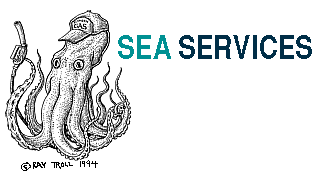

 Where rivers meet oceans, the young of many species find ideal
nurseries. § These transition zones between fresh and salt
water are called estuaries. They are rich in river-deposited and
recycled nutrients, and sea grasses provide good hiding places
for the young. § Many commercially useful fish feed in
estuaries when young. § Shrimps, crabs, oysters, cockles, and
mussels are caught in estuaries. §
Where rivers meet oceans, the young of many species find ideal
nurseries. § These transition zones between fresh and salt
water are called estuaries. They are rich in river-deposited and
recycled nutrients, and sea grasses provide good hiding places
for the young. § Many commercially useful fish feed in
estuaries when young. § Shrimps, crabs, oysters, cockles, and
mussels are caught in estuaries. §
 One quarter of the world's oil and gas come from the sea floor,
tapped by offshore drilling or deep-sea drilling. §
Oceans offer other energy sources. In tropical areas, the
difference in temperature between sun-warmed surface water and
cold, deep water can be converted into electricity. Experimental
projects are showing that Ocean Thermal Energy Conversion (OTEC)
could be renewable, available round the clock, and easy on the
environment. § Tidal and wave energy can also be used to
generate electricity. §
One quarter of the world's oil and gas come from the sea floor,
tapped by offshore drilling or deep-sea drilling. §
Oceans offer other energy sources. In tropical areas, the
difference in temperature between sun-warmed surface water and
cold, deep water can be converted into electricity. Experimental
projects are showing that Ocean Thermal Energy Conversion (OTEC)
could be renewable, available round the clock, and easy on the
environment. § Tidal and wave energy can also be used to
generate electricity. §
Water Water (including ice and vapor) moves around the earth through underground aquifers, rivers, oceans, and the atmosphere. Because it holds and transports heat, water profoundly affects climate. § And, because the water cycle is the largest movement of any substance on earth, it has great control over life on our planet. §
Carbon Carbon is life's building block--the structure for every cell of every organism on this planet. Oceans are the major reservoir for available carbon (sedimentary rocks lock in over 99 percent of the earth's carbon). Because oceans take up carbon very slowly, only about half of the carbon dioxide released by burning fossil fuels since 1800 has been absorbed into the oceans. §
![]() Ocean Planet Exhibition Floorplan
Ocean Planet Exhibition Floorplan
![]()